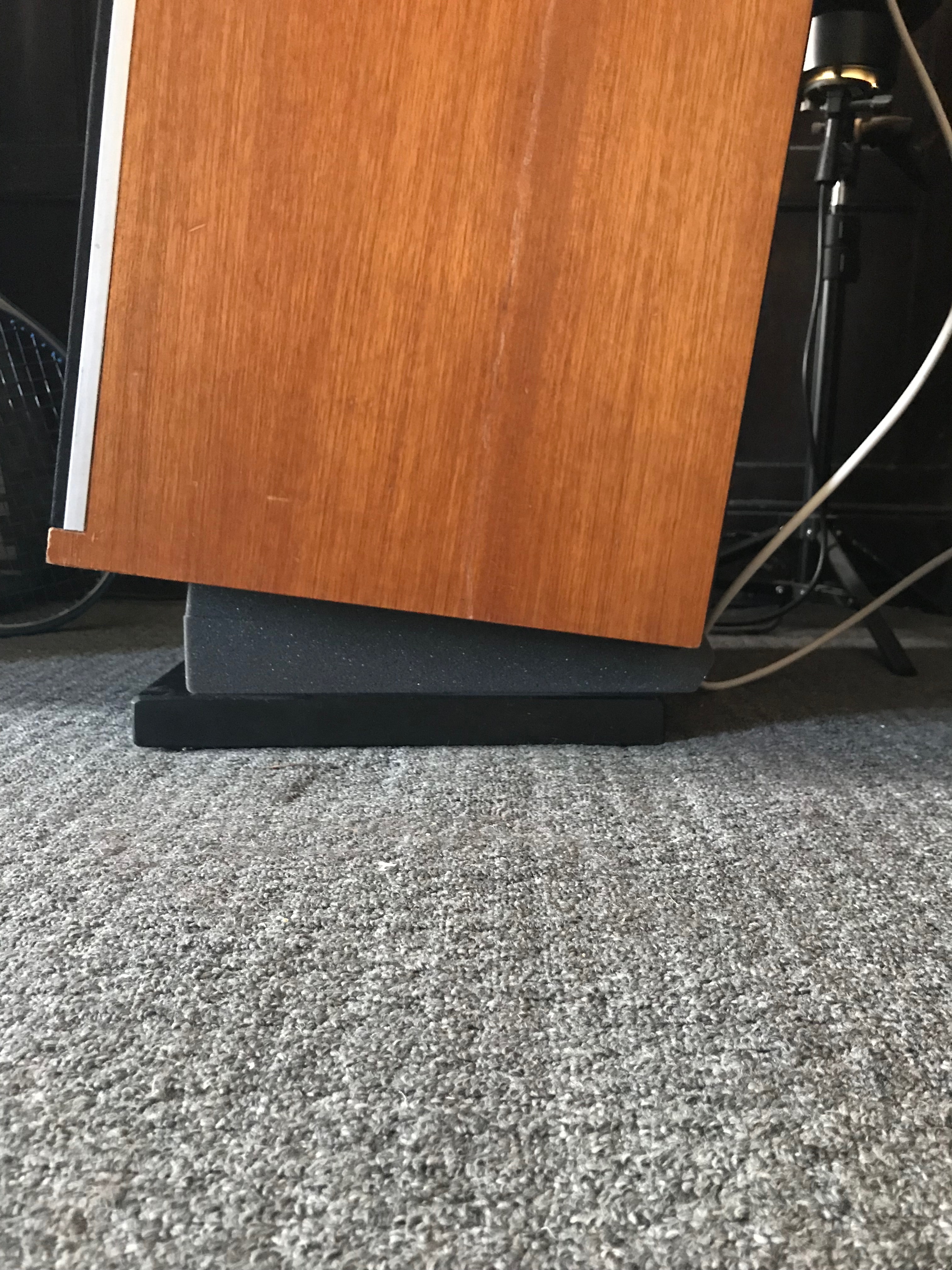I recently inherited a pair of these speakers from my parents, who had been using them as side tables for the last 20 odd years...
Unfortunately the floor in my study - where they now happily reside - is rather uneven, so I can't put them directly on the floor. It's an old wooden floor supported on some rather old beams, so I'm not sure I'd want them directly on the floor anyway. My previous speakers (Neat Motive2s) were made level with some granite plinths and some clever use of adjustable spikes. These DM2s have no spikes, and are a lot bigger than the granite I used for the Neats. Any recommendations on what I could use to raise them off the ground by no more than 10", and somehow tilt to bring them to horizontal?
Unfortunately the floor in my study - where they now happily reside - is rather uneven, so I can't put them directly on the floor. It's an old wooden floor supported on some rather old beams, so I'm not sure I'd want them directly on the floor anyway. My previous speakers (Neat Motive2s) were made level with some granite plinths and some clever use of adjustable spikes. These DM2s have no spikes, and are a lot bigger than the granite I used for the Neats. Any recommendations on what I could use to raise them off the ground by no more than 10", and somehow tilt to bring them to horizontal?






